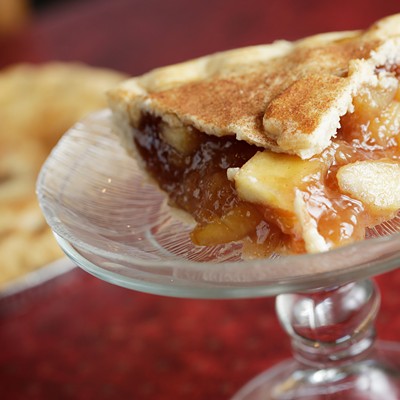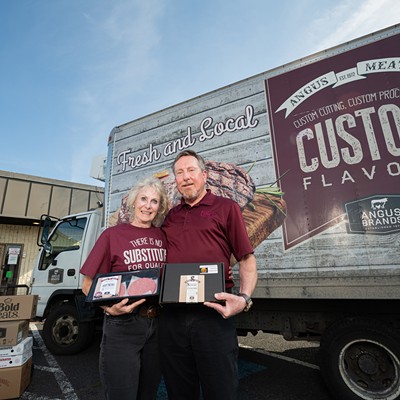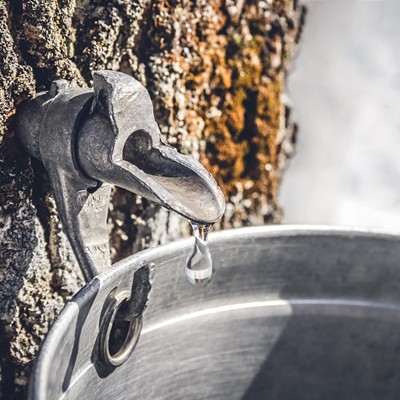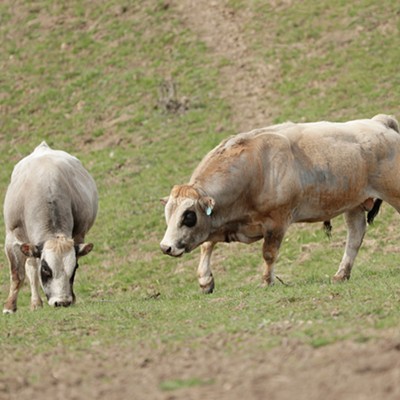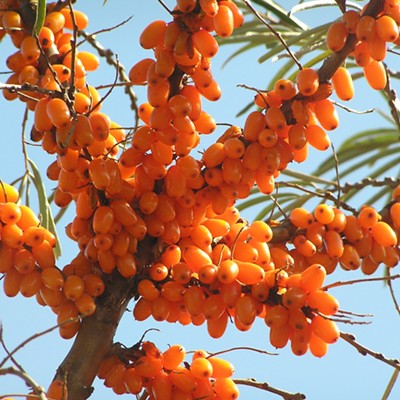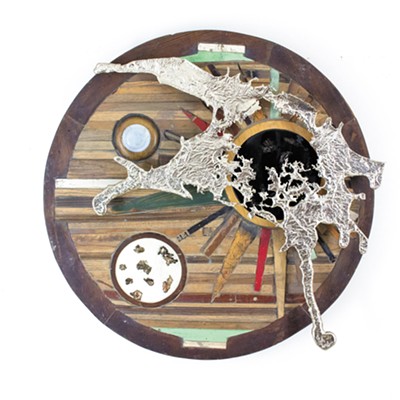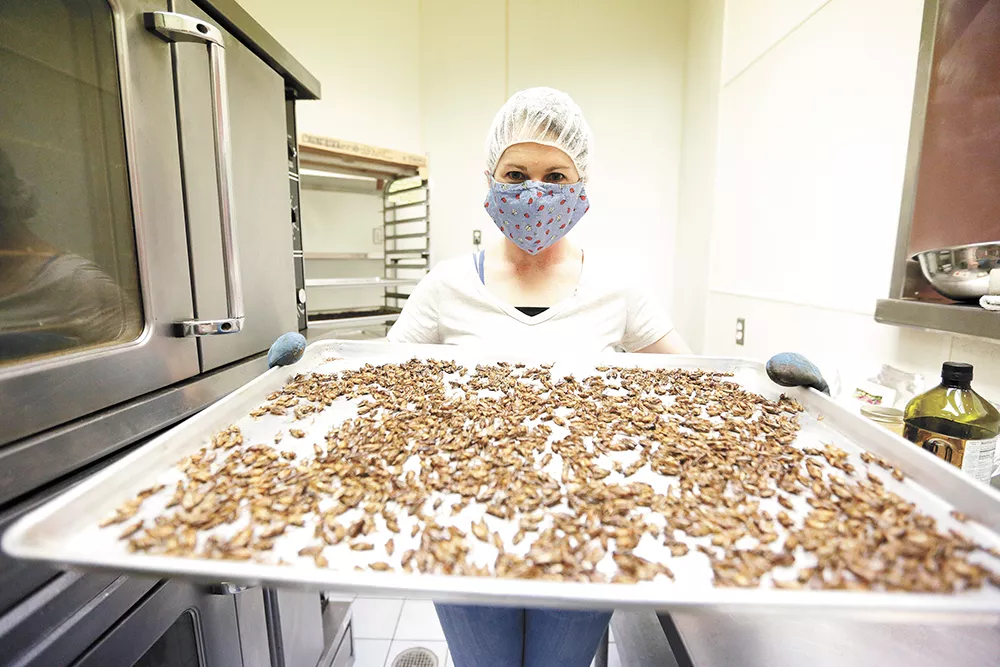
A herd of cows, a flock of sheep, a row of crops — all are recognizable farming terms, none of which apply to Joanna Newcomb's farming operation. That's because Newcomb raises crickets. For food. Really crunchy and unusual food, at least to American consumers.
"They're kind of like potato chips," says Newcomb, "only nuttier."
Potato chips ... with tiny eyes.
"It's mostly just the concept that people have to get over," says Newcomb, who launched Chomper Cricket Farm in 2019, initially selling at the Spokane Farmers Market ($8.50 per 1.23-ounce bag). Now her little bags of roasted, seasoned crickets are available through LINC Foods and at Main Market Co-op and the Emerson-Garfield Farmers Market in three flavors: salt and pepper, taco, and honey cinnamon.
Taco is the most popular flavor, says Newcomb. They're similar to spicy crickets commonly eaten in Mexico, called chapulines.
Eating bugs in general is actually common in many parts of the world.
While beetles, crickets, locusts, grasshoppers and ants top the list, several thousand species of bugs are edible. Estimates vary that between 25-80 percent of the world's population engages in entomophagy, or eating insects, much of them foraged versus farmed.
Insect farming, however, is definitely of interest, including raising crickets. They're high in protein, low in saturated fat and rich in B12, and other essential trace nutrients. They also have a small footprint — thousands of Newcomb's critters chirp away (like, all day long, she says) inside gray plastic totes on a shelf in her spare room.
"For perspective, it takes about a gallon of water to produce 1 pound of crickets," writes Newcomb on her business' Facebook page. "But to produce 1 pound of soy it takes 216 gallons of water, for 1 pound of eggs it takes 375 gallons of water, and for 1 pound of beef, it takes a whopping 2,000 gallons of water."
Although eating insects is more common in Africa, Asia and Latin America, the industry may be gaining traction in the United States. According to Global Market Insights, the U.S. insect foods market was around $112 million last year and is expected to grow into a $1.5 billion dollar industry by 2026.
Newcomb's interest in cricket farming didn't follow a typical route. You might even say her career plans jumped around a little.
While attending Whitworth University for journalism and philosophy, she started writing about food for the Inlander. She met a lot of business owners in the food industry, which appealed to her entrepreneurial spirit, but she didn't have a firm idea on what she'd make or do. So she worked for the U.S. Postal Service as a mail carrier, then traveled internationally for a year. After stints in South Africa and Madagascar, she ended up in Alaska on a fish-processing vessel. Food seemed to be a constant.
Upon returning to Spokane, she got a job at local energy bar maker Bumble Bar, where she still works, and moved to Vinegar Flats in southwest Spokane, a historically farm-focused community. She'd eaten some crickets a friend brought from Oaxaca and was intrigued by the viability of insects as a protein source, so decided to give farming them a go.
To get started, Newcomb looked at Cowboy Cricket Farms in Bozeman, Montana, did a lot of research, and purchased adult acheta domesticus, aka field crickets, from the pet store intending to harvest the offspring.
"They lay eggs like crazy," says Newcomb, who had difficulty keeping the little hoppers from escaping at first.
Baby crickets are called pinheads — they're that small — and are kept separate from adults, who will eat just about anything, including their own offspring. After two months on a diet of nutritional yeast, plant protein, oats, fresh organic produce and the occasional Bumble Bar leftovers, Newcomb's crickets are ready to repeat the cycle. Occasionally she purchases new crickets to refresh the genetic web.
At harvest time, she freezes them for 24 hours to permanently immobilize them. Next comes a thorough washing before they're popped into the oven at Kitchen Spokane, where she does her processing. Finally, she adds seasoning and roasts a bit more to seal flavors and ensure the crickets are super crunchy.
Roasted crickets have a long shelf life, at least seven months, says Newcomb. Although she used to eat more of her roasted crickets, now she views them differently, as a source of income.
However, if there are issues (like we've had recently) with the national food chain, Newcomb says, she knows where she can find plenty of protein. ♦
For more information, find Chomper Cricket Farm on Facebook.




